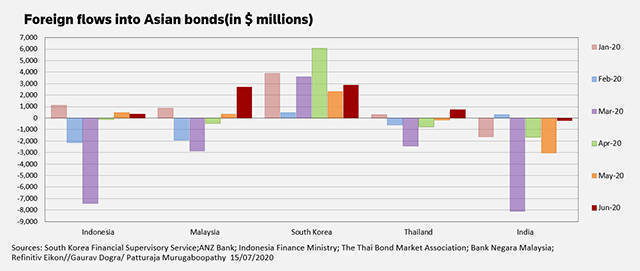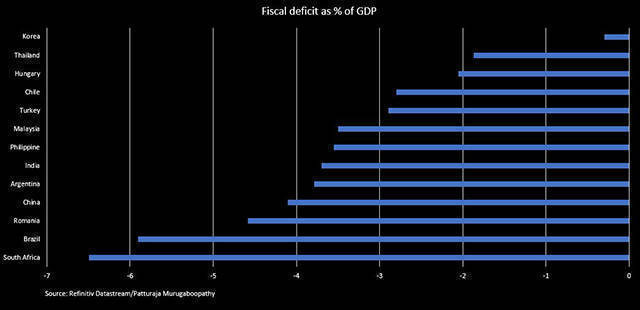Asian bonds recorded their biggest foreign inflows in a year in June as a surge in global liquidity following stimulus measures unveiled by major central banks bolstered demand for regional assets.
Asian bonds received a combined net inflow of $6.45 billion last month, the highest since June 2019, data from regional banks and bond market associations in Indonesia, Malaysia, Thailand, South Korea and India showed.

Foreign investors bought $2.87 billion worth of South Korean bonds, the highest in the region. The country's bonds have attracted inflows every month this year.
South Korea's stronger current account position, lower fiscal deficit and better yields, compared to other countries with the same sovereign ratings, are the reasons behind inflows into its bonds, some analysts said.

Malaysian bonds also received $2.7 billion worth of foreign money last month, largely into government securities.
Foreign buying in Malaysian bonds in June "is in line with higher portfolio flows into emerging market debt as negative sentiment abated amid reopening optimism and carry-trade flows," Julia Goh, a senior economist at UOB, said in a report.
At the end of last month, ratings agency S&P Global changed to negative its outlook on Malaysia, to reflect weaker fiscal metrics, growth outlook, and heightened policy uncertainty.
Thailand and Indonesian bonds also received $718 million and $364 million in inflows last month. Foreigners sold $204 million worth of Indian bonds in June.
With more than a million cases of coronavirus, India is the third most afflicted country globally, just after the United States and Brazil.
"The amount of global liquidity injected by major central banks is likely to see some of it flowing into Asia, especially with investors seeking higher yields amid a prolonged period of zero or negative interest rates in developed economies," Khoon Goh, head of Asia Research at ANZ, said in a report.